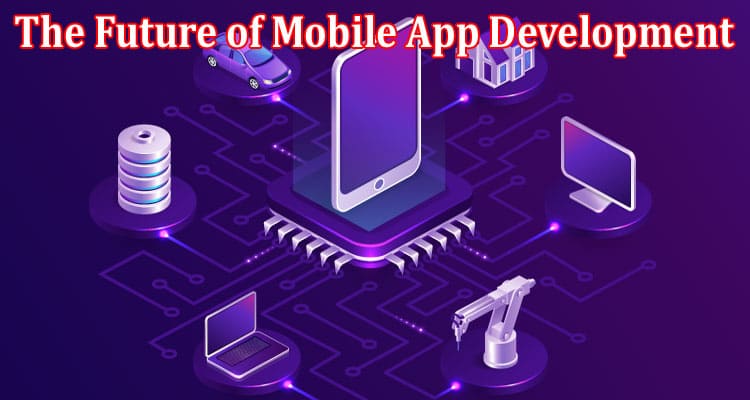The Future of Mobile App Development: Trends You Need to Know
A smartphone today is not only a means of communication, but also a tool for shopping, playing games, and communicating. In this regard, brands are launching their own mobile applications, which are increasing in number every day. Despite the attractive prospect, many of them remain unused and fail. The reasons are bad user experience, the complexity of the application, the presence/absence of necessary functions, and the inability to perform the desired action.
Most often, the application is launched immediately, without analyzing or researching how it will work. We offer a look into the future of mobile application development and find future trends. What exactly do you and your flutter app development service need to know in order to implement and sell a cool mobile application that users will use?
The Future of the Mobile App — Current and Future Trends
How to create a mobile application that will always be active on the smartphone screen? To do this, we recommend introducing new tools in advance. It is important to forecast, look to the future and follow trends.
5G technology
High-speed Internet provides free access to any resource. 5G technology already exists, and its further progress will only increase. And it is worth noting that the rapid development of technologies causes the growth of companies that must follow innovations. This applies to mobile operators.
According to data, their number doubles and triples every year, which will lead to a real revolution in the service sector. 5G will speed up downloads by almost 10 milliseconds, which is 100 times faster. Developers will be able to implement more functions, and fill programs with additional features without losing performance.
IoT integration
The Internet of Things (IoT) refers to all physical items that are linked to the Internet and communicate with one another (for example, exchanging data). The Internet of Things idea enables consumers to improve their daily lives. The Internet of Things refers to a network of linked gadgets that enable convenience and automated control.
Mobile applications will allow you to configure the air conditioner in the house remotely, and connect to the security system. An example is a robot vacuum cleaner, which also needs to be started and programmed using a mobile app, as well as other household appliances.
Development for wearable devices
Today, users can answer calls from a tablet and send messages through a smartwatch. The trend towards the popularity and consumption of devices remains stable as before. Back in 2019, Apple announced the integration of wearable devices and applications, after which the company began to create separate applications for them. In the future, the focus will be on developing mobile applications for wearable devices. Such companies like Perpet companies make it possible to download applications simply from your wrist with the help of a smartwatch. And every year, such applications become more and more functional.
Implementation of AR and VR
Mobile apps can use virtual and augmented reality for various functions. For example, Google Maps now includes a “Live View” function that allows users to see real-time directions on real-world photographs.
In the field of gaming, the undisputed leader is Pokemon Go, which introduced a virtual reality tool, making a breakthrough in the idea of gaming mobile applications.
Consider in what format you can use AR and VR in the development of your mobile applications. Connecting VR technology to a smartphone, app, or wearable device is now available to enhance the user experience.
AI and machine learning
If we talk about artificial intelligence, voice assistants like Siri and Alexa immediately come to mind. However, technology has already gone beyond these limits.
Not so long ago, Apple released the machine learning platform for iOS Core ML 3, which helps developers implement artificial intelligence technology in mobile applications.
What features can you implement with AI?
- recognition of faces and images;
- voice recognition;
- text classification;
- creating filters.
Mobile wallet
Using a mobile phone to pay and make payments is considerably easier, quicker, and more convenient. The expansion of payment services such as Apple Pay, Google Pay, and Samsung Pay is expected to continue. Apps should consider smartphone payments in the next years.
Every app that performs transactions will have mobile wallet integration as a basic feature. This is especially true in the case of mobile e-commerce, where huge merchants and brands employ a mobile app to enhance sales.
Security
Mobile apps come in third place after calling and texting in the fraud engagement section. The safety of your customers should be a priority. Users are aware of the risks, so they are reluctant to share passwords or provide access to confidential information to third parties.
It is better for developers to implement such functions as “Sign in with Apple” or “Sign in with Google” into mobile applications. This will allow the user to avoid filling out additional forms with name, email, and password. They can log into the account using the ID they have already created. Apple protects accounts with two-factor authentication and does not track their activity.
Integration with cloud services
Cloud services have a wide range of possibilities for mobile app development. The technology will increase the productivity of mobile applications that will perform tasks in the cloud and will not store information on the device. This will optimize the process and reduce possible additional costs. One of the most popular ways to use cloud technologies is the integration of the application with cloud storage to save a backup of the user’s personal data.
Conclusion
Mobile traffic statistics suggest that brands need to use a mobile app. However, it should not be released recklessly, it is necessary to include functions that will facilitate interaction and create a high-quality user experience.
We recommend studying current and future trends. This knowledge will help calculate further steps, and implement innovative technologies before competitors do. Make your mobile application convenient, modern, technologically filled, and functional. In this case, it will definitely find the application of users of your audience.




